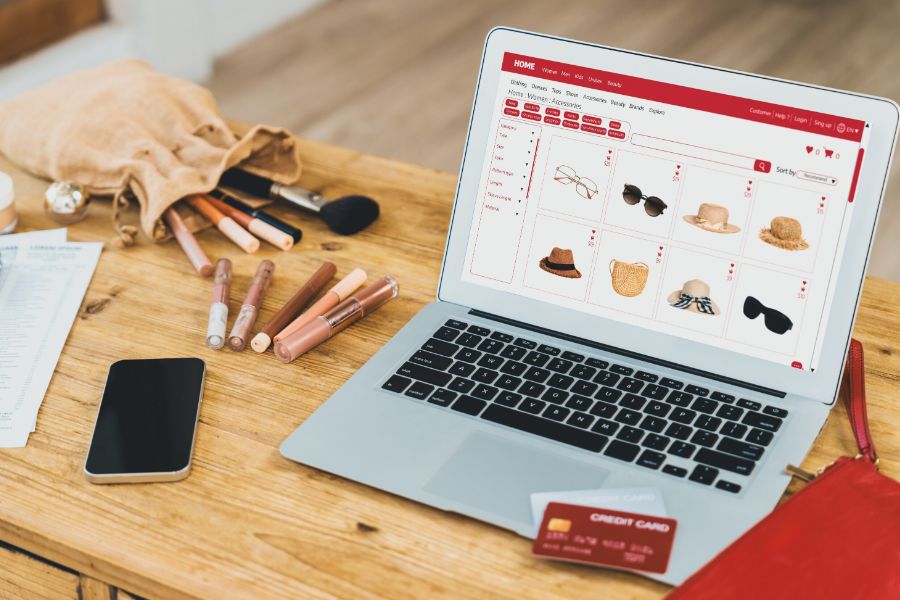Brands nowadays have plenty of ways to reach their customers, such as in brick and mortar stores, or on mobile, desktop, and social media. The challenge is, you can never be sure which channels your customers are going to use to get in touch with your brand.
Customers can experience a disconnection from brands that do not use an omnichannel approach when they move between channels. While many customers can be loyal customers to one channel and entirely new for others, and so brands need better preparation for welcoming customers to all of their channels. While this can be difficult to accommodate for, it does pose great potential for stores to differentiate themselves. The omnichannel strategy was developed as an answer to the challenge of managing multiple channels.
Brands have been looking to accommodate for the changing shopping habits of the market. Many brands are now beginning to implement their own omnichannel approach to sales and customer service, giving themselves a more competitive edge.
What is it?
Omnichannel is the integration of all channels into one interconnected network. What makes omnichannel distinct from multichannel is all in the implementation. At the same time, multichannel targets a variety of channels, omnichannel takes these channels and unifies them to deliver one continuous experience. Essentially, it creates an ecosystem that embodies the brand, being developed from the brand’s image.
Linking together all platforms such as mobile, desktop and in store, retailers are able to create a consistent and organized system to track better and connect their customers’ experiences. It creates continuity for customers, giving them more flexibility in where and how they shop.
Other benefits of omnichannel include the fact that it centralizes the management systems, meaning you will only need to manage one continuous system, especially when it comes to inventory management and customer information.
Omnichannel is inclusive of all channels of contact, making it a very dynamic retail strategy. We have looked at some of the key areas where omnichannel can have an impact.
Devices
While on the one hand, omnichannel promotes consistency of a brand throughout each channel, there are several ways in which channels can be differentiated. This differentiation is mostly based on the device, using the unique features available to enrich the user’s experience and provide a useful service.
There has been a clear growth in sales being made from mobile devices. Mobiles offer better opportunities for brands and expand the potential for customers not only through apps, but also with innovative features such as mobile barcode scanning and personalized customer experiences based on location.
As mobile commerce continues to gain popularity, so too does the necessity for cross-channel synergy. Using the unique functionality and portability of mobile devices can create interesting experiences while enhancing and better integrating different channels together. Desktop computers and laptops are still popular methods for accessing the internet and for e-commerce activities.
Being more powerful than their portable counterparts, desktops can offer interesting and immersive experiences to customers. Audio-visual media may be better suited to the desktop, where users are less likely to be confined by limited data plans. Videos are a great platform for creating visual and audio experiences, whether they show products being reviewed and demoed, or just videos that build up a brand’s image.
These Omnichannel strategy experiences are just the beginning, however, as there is a myriad of possible applications for such a system that can be implemented in the future as more powerful devices become available.
In-Store
Omnichannel not only looks ahead at promotion through new technologies but also behind towards the more traditional methods and channels, as brick and mortar stores still play an important role in the shopping experience for customers.
In-store pickup, also known as click and collect, is a rather common way for stores to integrate online and offline experiences, with many brands now offering the service alongside their delivery service. Customers can order a product online and later pick up the product in-store. Though it is a rather simple concept, it does embody the spirit of integration between separate channels.
Another trend that has appeared is showrooming. The ‘showrooming’ phenomenon is a direct consequence of the growth of e-commerce and digital retail as a whole. Customers use brick and mortar stores as a sort of showroom, demoing products with little to no intention of buying the product in-store – instead intending to order online later.
This has lead to brands rethinking how they utilize their stores, trying to reinvent the experience. To combat this trend, brands must improve the in-store experience, enticing visitors to the store to then convert into customers. One step that has been taken, is connecting offline and online elements together while utilizing the benefits of in-store shopping, thus adding more value for customers.
Some brands take it in another direction with ‘webrooming’. Recently, web rooming has began to emerge, as brands have revitalized their stores using omnichannel strategies. Webrooming is essentially the opposite of showrooming, where customers search online for products to later purchase them in-store.
POS systems
Point of Sales (POS) is another element these traditional stores can utilize to bring them inline with the digital age. Effective omnichannel-ready POS systems can vastly improve the in-store experience for customers, helping brands to win over customers. POS can be used as part of an omnichannel strategy to consolidate many elements such as the product catalogue, customer database, and order lists for both online and physical stores, into one manageable system. Any changes made to the system, such as updating tax rules or special prices for items, will then be updated in real time across all the sales channels.
For customers, this approach can help improve their experience by introducing things like centralized inventory management, which can be monitored and seen across channels so that customers know when and where a product is in stock. Finally, it is possible to record and synchronize in-store customer information with data from other sales channels.
Social Media
Social media are amongst the most popular websites, where people spend a lot of their time online. With such high levels of user traffic, these social media channels make it possible to reach large audiences with your brand. Building on the omnichannel approach, brands can address these audiences directly.
There are a number of applications for social media as part of an omnichannel strategy. Many e-commerce platforms now allow brands to sell their products directly through Facebook and other social networking sites, simplifying the shopping process for customers. E-commerce platforms like Shopify Plus enable brands to build ‘Facebook stores’ where everything, from searching products to checkout, is handled through the Facebook website. Combining the shopping process with the personalization offered by the live chat will help to create unique, tailored experiences.
The opportunities presented by social media have also transformed marketing, creating a platform for brands to build a voice for themselves, develop their image and also increasing recognition. It is through social media that brands can begin to unify their channels through the development of a recognizable brand personality.
Customer service
Customer service is another key area that can be improved through omnichannel. Until recently, customer service remains a challenge for brands offering a multi-channel approach.
In-store service was by far the most prompt and intimate, providing a very personalized approach for each individual. However, omnichannel helps to bring this personal level of customer service to other channels.
Social media harbours conversation and interaction, making it another important point of contact for customers who wish to engage with a brand. Live chat through social media or other popular chat platforms offers a high level of intimacy and personalization thanks to customer data stored in the system, as well as offering speedy replies, replicating that of in-store service, again building continued and merged experiences for customers. Live chat can also be implemented directly on the e-commerce site, allowing brands to provide these services more directly.
Loyalty systems are also popular and a great way of encouraging repeat customer purchases. This may take the form of a discount or free gift, giving customers more value and incentive to continue shopping with your brand. Implementing an omnichannel strategy, these systems are able to span both online and offline, meaning customers aren’t missing out on however they decide to shop with your brand.
Omnichannel has now become an essential part of commerce. With the wealth of choice made available through the internet, customers look at the brand and the experiences they provide.
This list is by no means exhaustive and, as technology continues to improve and new trends start to emerge, omnichannel will become even more important. It is important that you account for all the ways your audience will access your brand and give them the freedom to shop however they like.
►►► See our products: Magento POS, BigCommerce POS, Shopify POS, Woocommerce POS, NetSuite POS, Commercetools POS, Custom POS, White label POS, Customer Experience Solution and Next-Gen POS




